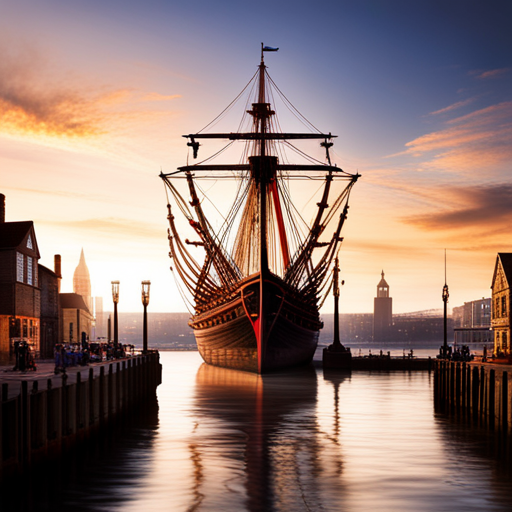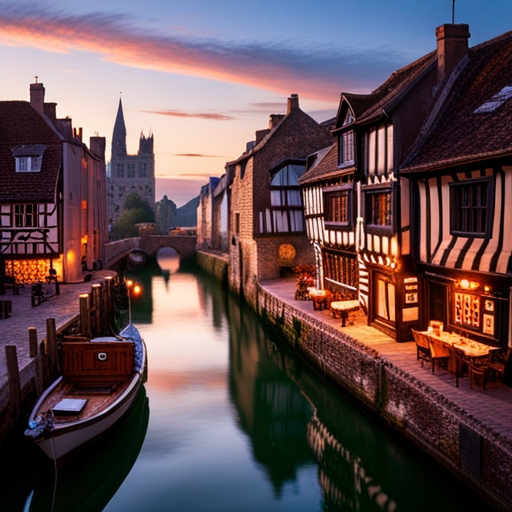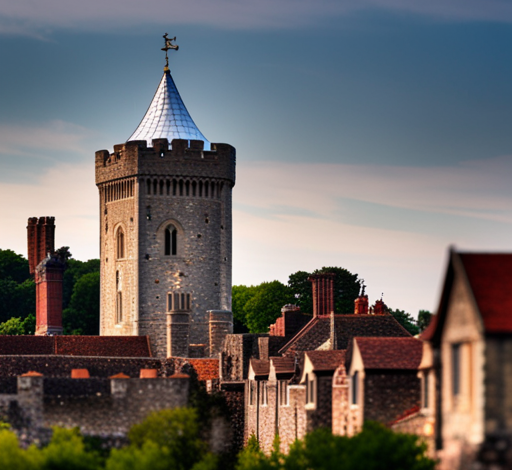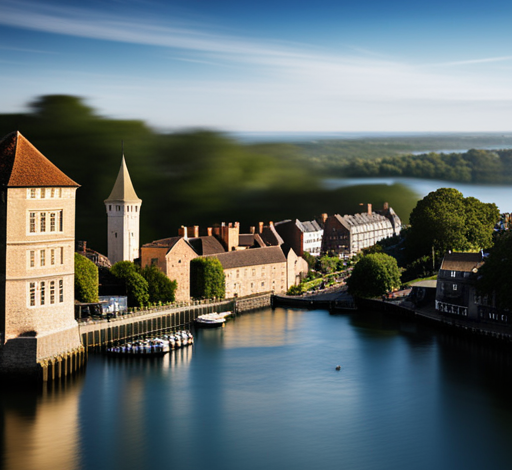
Tracing the Threads: Exploring the Normandy Connection in Southamptons History
Discover the rich tapestry of Southampton’s history as you follow the threads that connect this vibrant city to Normandy.
Uncover the medieval roots of Southampton, forged through Norman influence and the power of its ports. Marvel at the architectural legacy left by the Normans in the city’s landmarks.
Delve into the economic ties and cultural exchange between Normandy and Southampton.
Join us on this captivating journey as we explore the Normandy connection in Southampton’s fascinating history.
The Norman Influence: Unraveling Southampton’s Medieval Roots

As you explore Southampton’s medieval roots, you’ll unravel the Norman influence that shaped the city’s history. The Normans, descendants of the Vikings who conquered the region of Normandy in northern France, played a significant role in shaping Southampton’s development.
In the 11th century, William the Conqueror, a Norman duke, invaded England and established his rule, bringing with him the Norman culture and architectural styles. This influence is evident in the city’s medieval architecture, such as the iconic Bargate, which showcases Norman influences with its sturdy stone walls and arches.
Additionally, the Normans introduced a new social and political structure, establishing a strong feudal system that impacted the city for centuries to come.
Exploring Southampton’s medieval roots allows you to uncover the rich Norman influence that has left an indelible mark on the city’s history.
Ports and Power: Southampton and the Norman Conquest

You can see the influence of the Norman Conquest on Southampton’s ports and power.
After the Norman Conquest in 1066, King William I recognized the strategic importance of Southampton’s natural harbor and began to develop it into a major port.
The Normans expanded the port, built defensive walls, and established a thriving trade hub that connected England with continental Europe.
Southampton’s port became a vital link in the Norman supply chain, enabling the transportation of men, goods, and military equipment.
The Conqueror also established a royal castle overlooking the port, further solidifying his control.
The Norman influence on Southampton’s ports and power can still be seen today, with the city’s thriving maritime industry and its role as a major port in the UK.
Architectural Legacy: Exploring Norman Influence in Southampton’s Landmarks

When visiting Southampton, you’ll notice the lasting impact of Norman architecture in the city’s landmarks. The influence can be traced back to the Norman Conquest of England in 1066 when William the Conqueror established a stronghold in Southampton.
One of the most iconic examples of Norman architecture is the Southampton Guildhall, built in the late 12th century. Its grandeur and intricate detailing showcase the craftsmanship of the Normans.
Another notable landmark is St. Michael’s Church, known for its Norman tower that dates back to the 11th century.
The Norman influence is also evident in the city walls, which were originally constructed by the Normans to protect the city.
These landmarks serve as a reminder of Southampton’s rich history and the enduring legacy of Norman architecture in the city.
Trading Ties: the Economic Relationship Between Normandy and Southampton

The economic relationship between Normandy and Southampton has played a significant role in shaping the city’s trade and commerce.
Throughout history, Southampton has been a vital port for trade between England and Normandy. The close proximity of the two regions, separated by only a narrow strip of water, facilitated the exchange of goods, ideas, and culture.
Normandy, known for its agricultural wealth and thriving textile industry, provided Southampton with a steady supply of goods such as wine, grain, and fine fabrics. In return, Southampton offered its own commodities, including wool, salt, and fish.
This trade relationship not only boosted the economy of both regions but also fostered cultural exchange, leading to the development of a rich and diverse community in Southampton.
Cultural Exchange: Normandy’s Impact on Southampton’s Art and Literature

Immerse yourself in the vibrant art and literature scene of Southampton, shaped by the cultural influences of Normandy.
The historical ties between Normandy and Southampton have resulted in a rich exchange of artistic and literary ideas.
Normandy’s impact on Southampton’s art and literature can be seen in various ways.
One notable influence is the Norman architectural style that can be found in many of Southampton’s buildings, such as the medieval city walls and the iconic Bargate.
Additionally, Normandy’s rich tradition of storytelling and literature has influenced Southampton’s literary scene, with local authors drawing inspiration from Norman folklore and legends.
The cultural exchange between Normandy and Southampton has created a unique artistic and literary landscape that continues to thrive, making Southampton a hub for creativity and expression.
Conclusion
In conclusion, the Norman connection in Southampton’s history is a fascinating and significant aspect of the city’s development.
The Norman influence can be seen in various aspects, from the architectural legacy of landmarks to the economic ties between Normandy and Southampton.
Additionally, the cultural exchange between the two regions has had a profound impact on Southampton’s art and literature.
Exploring these threads helps unravel the medieval roots of Southampton and highlights the enduring legacy of the Normans in the city’s history.



